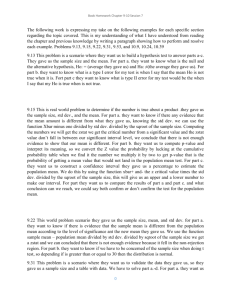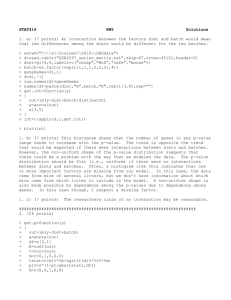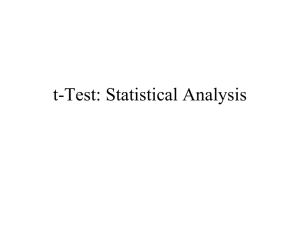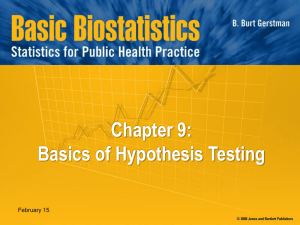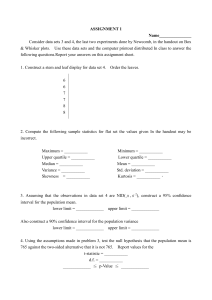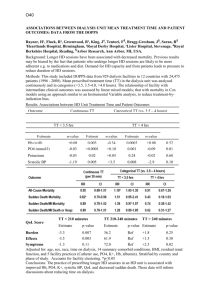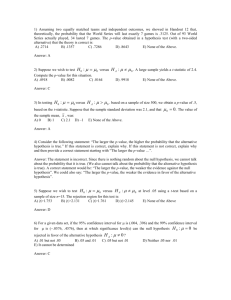Finding_P_Agresti
advertisement
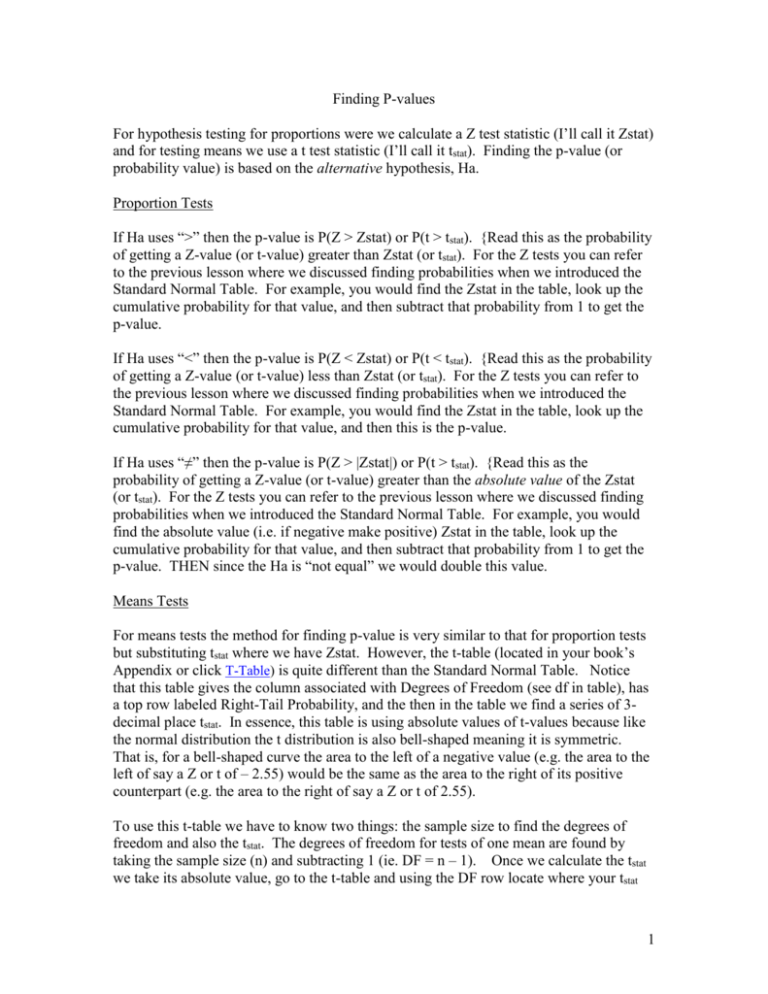
Finding P-values
For hypothesis testing for proportions were we calculate a Z test statistic (I’ll call it Zstat)
and for testing means we use a t test statistic (I’ll call it tstat). Finding the p-value (or
probability value) is based on the alternative hypothesis, Ha.
Proportion Tests
If Ha uses “>” then the p-value is P(Z > Zstat) or P(t > tstat). {Read this as the probability
of getting a Z-value (or t-value) greater than Zstat (or tstat). For the Z tests you can refer
to the previous lesson where we discussed finding probabilities when we introduced the
Standard Normal Table. For example, you would find the Zstat in the table, look up the
cumulative probability for that value, and then subtract that probability from 1 to get the
p-value.
If Ha uses “<” then the p-value is P(Z < Zstat) or P(t < tstat). {Read this as the probability
of getting a Z-value (or t-value) less than Zstat (or tstat). For the Z tests you can refer to
the previous lesson where we discussed finding probabilities when we introduced the
Standard Normal Table. For example, you would find the Zstat in the table, look up the
cumulative probability for that value, and then this is the p-value.
If Ha uses “≠” then the p-value is P(Z > |Zstat|) or P(t > tstat). {Read this as the
probability of getting a Z-value (or t-value) greater than the absolute value of the Zstat
(or tstat). For the Z tests you can refer to the previous lesson where we discussed finding
probabilities when we introduced the Standard Normal Table. For example, you would
find the absolute value (i.e. if negative make positive) Zstat in the table, look up the
cumulative probability for that value, and then subtract that probability from 1 to get the
p-value. THEN since the Ha is “not equal” we would double this value.
Means Tests
For means tests the method for finding p-value is very similar to that for proportion tests
but substituting tstat where we have Zstat. However, the t-table (located in your book’s
Appendix or click T-Table) is quite different than the Standard Normal Table. Notice
that this table gives the column associated with Degrees of Freedom (see df in table), has
a top row labeled Right-Tail Probability, and the then in the table we find a series of 3decimal place tstat. In essence, this table is using absolute values of t-values because like
the normal distribution the t distribution is also bell-shaped meaning it is symmetric.
That is, for a bell-shaped curve the area to the left of a negative value (e.g. the area to the
left of say a Z or t of – 2.55) would be the same as the area to the right of its positive
counterpart (e.g. the area to the right of say a Z or t of 2.55).
To use this t-table we have to know two things: the sample size to find the degrees of
freedom and also the tstat. The degrees of freedom for tests of one mean are found by
taking the sample size (n) and subtracting 1 (ie. DF = n – 1). Once we calculate the tstat
we take its absolute value, go to the t-table and using the DF row locate where your tstat
1
would fall. Most likely you won’t find your exact t test statistic in the table but it will
either be less than the first one listed in the proper DF row, between two listed, or larger
than the last one listed. (Note if you cannot find the exact DF use the closest to that DF
without exceeding, e.g. if DF is between 40 and 50 then use 40).
Once you find the t-value (or values) in the table from the previous directions, then go to
the top of the page for the column (or columns) for these t-value(s) to get the right-tail
probability for that column. These right-tail probabilities are the p-value(s)! What you
will notice (hopefully!) is that when using the Standard Normal Table you will get a
single number for your p-value, BUT when using the t-table you get a range of values
that the p-value can fall between.
1. If you had sample of size 15 resulting in DF = 14 and tstat = 1.20 your t-value
range would be less than 1.345 producing a p-value of p > 0.100. That is, the P(T
> 1.28) is a probability greater than 0.100. If your alternative hypothesis was “not
equal” then we would double this range to p > 0.200
2. If you had sample of size 15 resulting in DF = 14 and tstat = – 1.20 you would take
the absolute value (i.e. tstat = 1.20) and like the first example your t-value range
would be less than 1.345 producing a p-value of p > 0.100. That is, the P(T < –
1.20) is equal to P(T > 1.20) is a probability greater than 0.100. If your
alternative hypothesis was “not equal” then we would double this range to p >
0.200
3. If you had sample of size 15 resulting in DF = 14 and t-value =4.35 your t-value
range would be greater than 3.787 producing a p-value of p < 0.001. That is, the
P(T > 4.35) is a probability less than 0.001. If your alternative hypothesis was
“not equal” then we would double this range to p < 0.002
4. If you had sample of size 15 resulting in DF = 14 and t-value =2.11 your t-value
range would be greater than 1.761 and less than 2.145 producing a p-value
between 0.025 and 0.05 or 0.025 < p < 0.05. That is, the P(T > 2.11) is a
probability between 0.025 and 0.05 and if your alternative hypothesis was “not
equal” then we would double this range to 0.05 < p < 0.10
2
